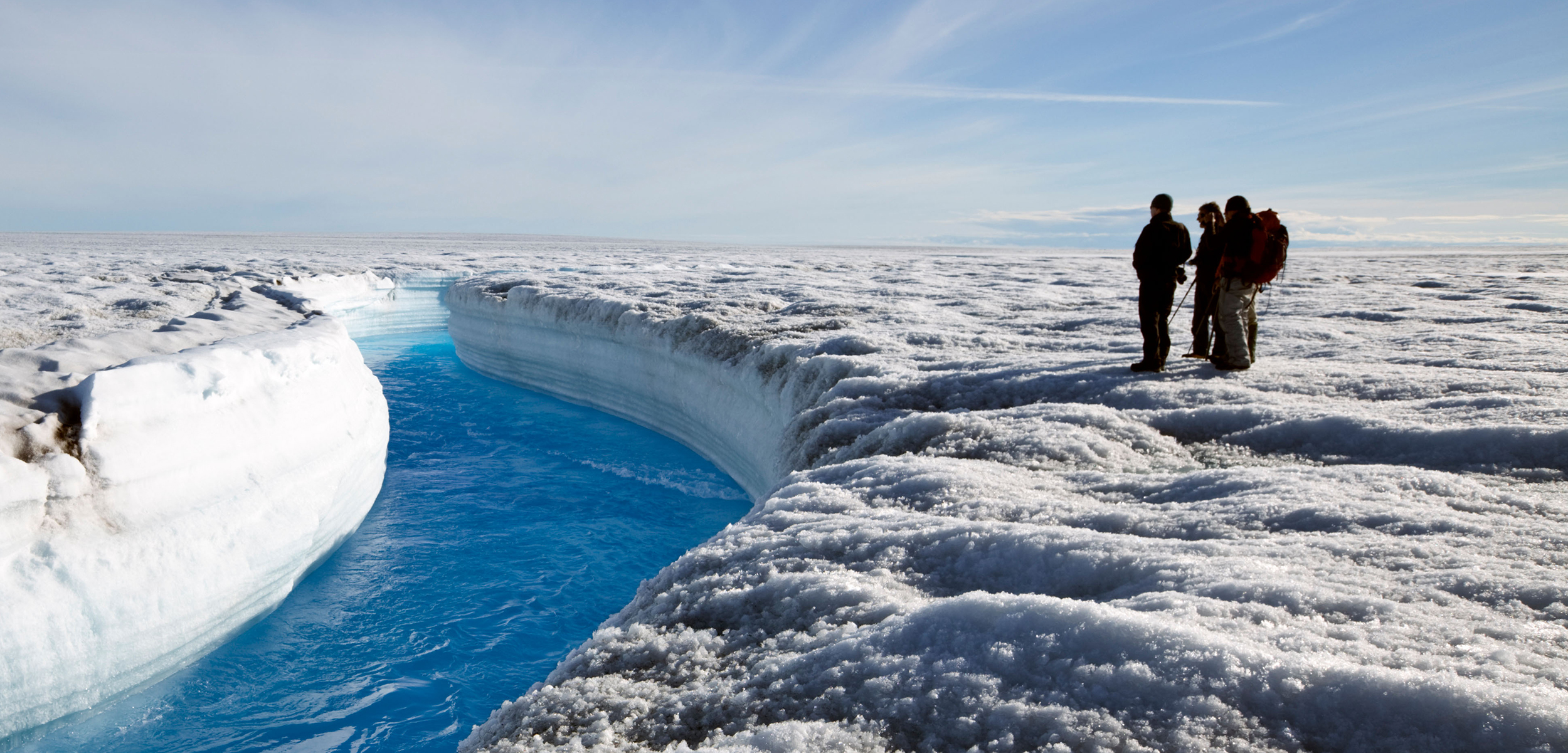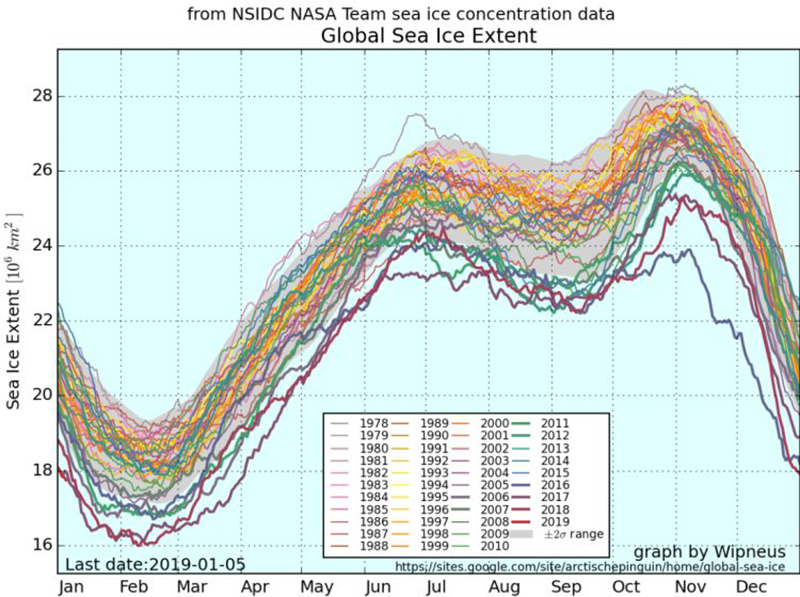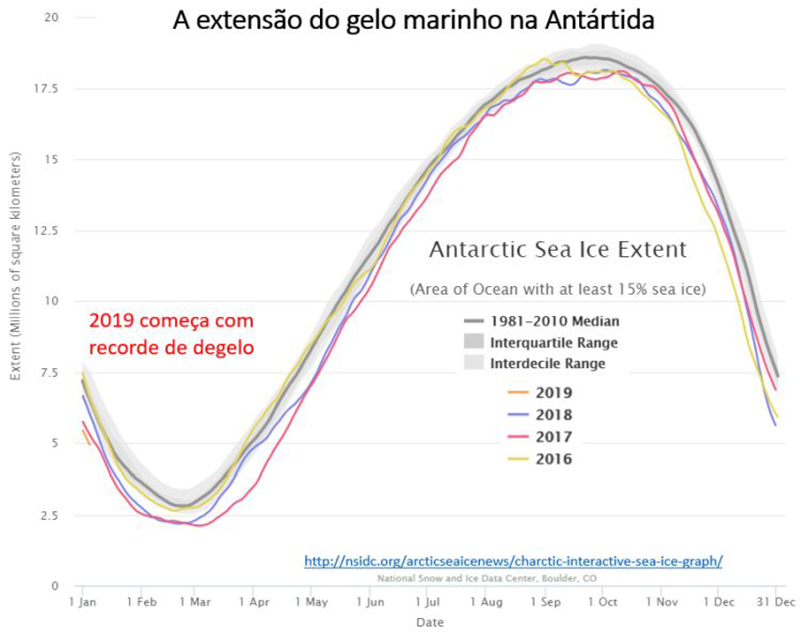According to researcher, melting reaches about 2 billion tons of ice.
There is enough ice in Greenland to raise sea level by 25 feet around the globe. This would end the main cities on the slopes.
https://youtu.be/xnai2C3vHhI
And NASA has proven that glaciers are melting beyond measure. These measurements are made year after year mapping the ice with numerous tools. Current technology allows for an extreme level of detail which is daunting.

Greenland's glaciers have a height equivalent to seven meters above sea level. However, a new study, published on Wednesday (19), with data from NASA, does not exclude that they melt completely until the next millennium under the effect of global warming and climate change.
"We predict that Greenland is likely to be free of ice by the end of the millennium unless there is a significant reduction in greenhouse gas emissions," concludes the team led by researchers at the University of Alaska Fairbanks in a study published by Science. Advances
Its model adds to many others that show that Greenland's glaciers have been melting at a great speed since 2000, and that the process is getting worse. For this study, the scientists explored NASA's (IceBridge operation) aerial measurements of ice sheet thickness, and estimated the velocities of glaciers and ice currents that move at varying speeds and flow toward the ocean.
Researchers produce estimates according to more or less dramatic global warming scenarios. According to scientists, Greenland could contribute to a five to 33 cm increase in global waters by 2100. And over the next 1,000 years, in the worst case, it would be between 5.23 and 7.28 meters.

Record melting in Greenland (Photo: Reproduction Mashable / Steffen M. Olsen)
If we continue at this rate, Greenland will melt, ”says Andy Aschwanden, a professor at the University of Alaska Institute of Geophysics.
Concern about global warming is no wonder. And a new record scares researchers from around the world: Arctic ice melting, especially in the Greenland region, where it has the second largest ice sheet on the planet, which has risen above expected levels. The information was released by climate researcher from the Danish Meteorological Institute Steffen Olsen, author of the photo that records a large lake on an ice surface.

The fact came when Olsen had to cross the flooded ice to retrieve the ocean monitoring equipment installed on site. The sea ice under the lake water is still about 1.2 meters thick.
According to information released by Mashable, temperatures have risen in Greenland this week, resulting in the melting not only of sea ice, but of ice on nearly half the island's surface. With about 2 billion tons of ice, this is already considered the largest melt in history in the region.
Another subject matter expert, Jeremy Mathis, a deep Arctic expert and current board director of the National Academies of Sciences, told Mashable that he is running out of adjectives to describe the scope of the change we are seeing. "I'm losing the ability to communicate the magnitude[da mudança]."
"The inexorable fact is that increasing greenhouse gas emissions (burning fossil fuels, releasing methane gas in livestock, etc.) raises the temperature of the atmosphere and the oceans and increases global melt, accelerating the rise of the world. ocean level. Total melting of the poles and glaciers could cause sea levels to rise by as much as 70 meters. But only 5% of thaw would be enough to raise the seawater by more than 3 meters, a phenomenon that can cause great damage, "writes José Eustáquio Diniz Alves, PhD in demography and full professor of the master and doctorate in Population, Territory and Statistics. Publications of the National School of Statistical Sciences – ENCE / IBGE, in an article published by EcoDebate, 07-01-2019.
Here is the article.
Data show that early 2019 thaw levels in Antarctica are breaking all historical records.

The year 2019 begins with a record thaw at the poles. After five successive years (2014, 2015, 2016, 2017 and 2018) of record global temperatures, unprecedented in the Holocene (past 12,000 years), deglaciation is increasing and tending to raise sea levels, and release Carbon dioxide and methane gas are trapped under the ice, feeding the phenomenon of global warming.
The trend of ice loss is clear over the last 40 years. The curves in the graph above have a bimodal distribution, as the northern hemisphere peaks between February and March, when the southern hemisphere is in the valley (minimum ice). The global ice peak occurs between October and November. Following the annual curves (all with this same bimodal type of distribution), it is noted that they show a downward trend from the 1981-2010 average, although there are different short-term annual fluctuations from the long-term trend.
However, it is noteworthy that the pattern of falling ice since September 2016 has been unparalleled in the last 40 years when satellite measurements began. The 2016 curve experienced a sharp fall in the last quarter of the year (October to December) and continued to break record highs in the first two months of 2017 and 2018. Although there were monthly variations, the defrosting process hit record highs in late 2018 and early 2019.
Melting sea ice has been happening more widely in the Arctic, but it is most worrisome in Antarctica, which has large frozen platforms over the continent. In the Antarctic 1981-2010 average, the frozen area was 7.19 million km2 on January 1 of each year. But on 01/01/2019, the area with ice was 5.47 million km2, a difference to less than 1.73 million km2 (higher than the entire area of Northeast Brazil of 1.56 million km2). km2). Following this trend, it appears that the southern hemisphere summer will reduce the amount of sea ice to the lowest level in the Holocene. This may bode as a major environmental catastrophe in the not too distant future.

The frozen region over seawater partially protects the Antarctic continental ice block from collapsing and falling into the sea. For example, the time when the Ross Shelf is unprotected from sea ice has expanded, and in 2019 it happened earlier: New Year's Day. Sea ice will continue to decline throughout January and February and may continue to decline until early March. This causes wave energy as it infiltrates the interior continent to cause fractures and stress on the platforms that have been frozen for millennia in Antarctica.
Once the platform billing process begins, it would only be a matter of time before the huge West Antarctic land glaciers, such as the Doomsday glaciers on Thwaites and Pine Island, collapse, raising sea levels by up to 3 meters and flooding much of it. from all the coastal cities of the planet. Also in eastern Antarctica, researchers warned that the Totten Glacier, a huge ice sheet with enough volume to raise sea levels by at least 3.5 meters, seems to retreat, thanks to warming ocean waters. It has recently been discovered that a group of four glaciers west of Totten, in addition to a handful of smaller glaciers further east, are also losing ice.
Sea level is already rising in recent decades and the coastal areas of Brazil are increasingly affected by the advance of the sea. There are numerous cases, such as those that occurred in Praia da Macumba, in the West Zone of Rio, which lost part of the retaining wall placed by the city and large sections of the sidewalk collapsed with the force of the waves; destruction of several houses in Baía da Traição, on the coast of Paraíba; and in early 2019, several houses were impacted on Barra de Cunhaú beach in Canguaretama municipality, 75 kilometers from Natal, where 3,000 residents are threatened with flooding and the city has declared an emergency.
The inexorable fact is that increasing greenhouse gas emissions (burning fossil fuels, releasing methane gas in livestock, etc.) raises the temperature of the atmosphere and the oceans and increases global thawing, accelerating the rise in the level. of the oceans. Total melting of the poles and glaciers could cause sea levels to rise by as much as 70 meters. But only 5% of thaw would be enough to raise marine waters by more than 3 meters, a phenomenon that can cause great damage.
Paul Linhasen's article, published in Science magazine (21/12/2018), shows that about 125,000 years ago, during the last hot, brief period between the ice ages, the Earth was flooded, with waters rising from 6 to 9 meters from the current standard. Temperatures during this period (Eemian) were slightly higher than current temperatures. The source of all the water that swelled the oceans was the collapse of the western Antarctic ice sheet. Glaciologists worry about the current stability of this formidable ice mass. Its base is below sea level, at risk of being damaged by warming ocean waters, with fringed glaciers retreating rapidly.
From a sample taken from a sediment core, the paper provides evidence that the ice sheet has disappeared in the recent geological past under similar weather conditions. The Eemian period is not a perfect analog, as its sea levels were probably driven by small changes in Earth's orbit and axis of rotation. But evidence suggests that the recent melting of the ice sheet is the beginning of a similar collapse rather than a short-term variation.
Data from the National Snow & Ice Data Center (NSIDC) show that early 2019 thaw levels in Antarctica are breaking all historical records. On the precautionary principle, humanity should be concerned about rising sea levels. There are about two billion people living below two meters of sea level in the world.
If the history of the Eemian were repeated, arable and densely populated urban areas would be underwater, increasing the likelihood of rising hunger, poverty, climate refugees, and even a civilizational collapse.
References:
Tamsin Edwards. How soon will the ice apocalypse come? The Guardian, 11/23/2017
Eric Holthaus. Antarctic sea ice is 'astonishingly' low this melt season, Grist, Jan 3, 2019
EarthSky More East Antarctica glaciers are waking up, January 4, 2019
NSIDC – National Snow & Ice Data Center / ArctischePinguin



